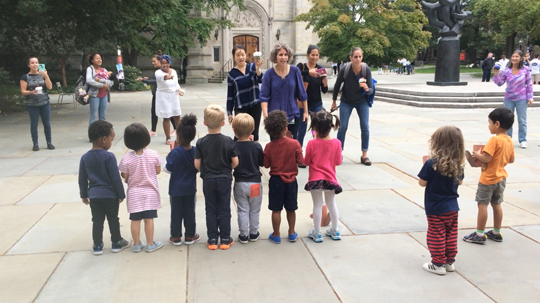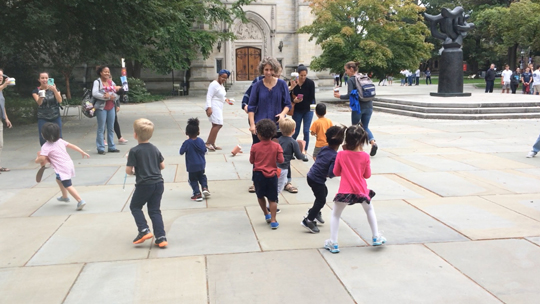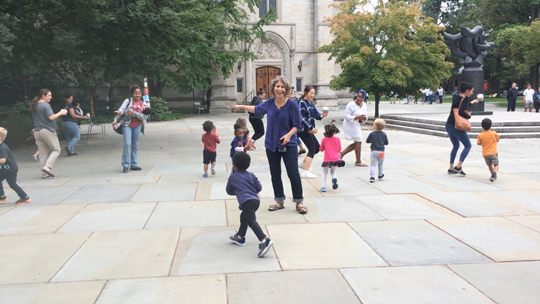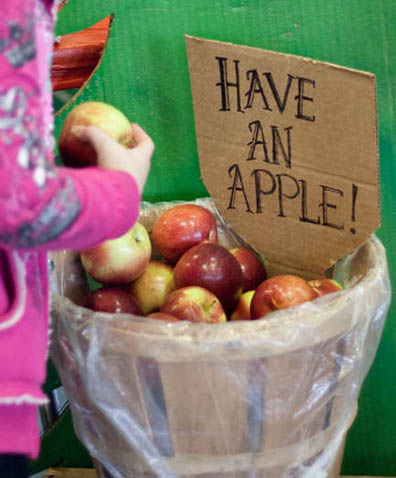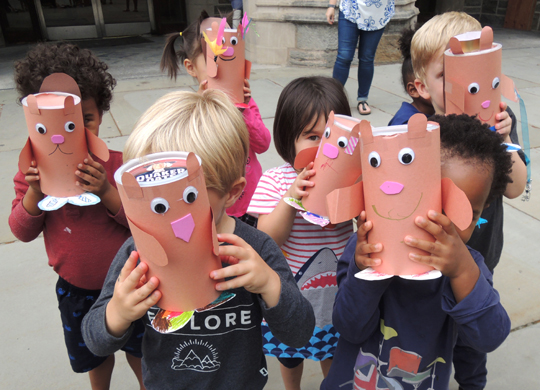
The race for the perfect acorn is on…but will these squirrels in snazzy running shoes be able to catch the elusive offering of the Quercus borealis maxima? We made oatmeal container squirrels and designed the perfect acorn. Then, kids chased down their grown ups to “catch” said acorn. Chaotic? Yup. Did we get photos? Oh yeah!
We read Aw, Nuts! by Rob McClurkan (Harper, 2014). Acorn-loving Squirrel has been stashing nuts all season, but when the most perfect nut of them all drops from a tree, he HAS to have it. But fitting the nut into his already overcrowded home? Problem. In fact, Squirrel’s house pretty much implodes with the new addition, sending him on a cross-country chase after the runaway acorn. He finally succeeds, but wait…is that a NEW delicious acorn Squirrel sees out the window?
You’ll need:
- 1 small oatmeal container
- Construction paper
- Poster board
- 1 packing tape core
- 1 paper bowl
- 1 pipe cleaner
- Scissors and tape for construction
- Markers for decorating
- Hot glue
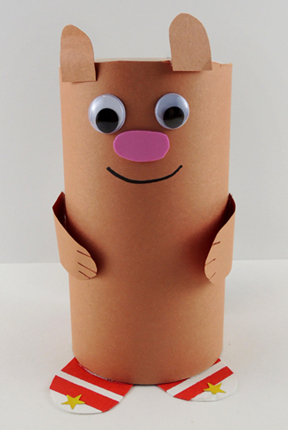
The squirrel is very simple. Wrap a small oatmeal container with brown construction paper. Add arms and ears. Use markers to draw on eyes, a nose, and a mouth (or use wiggle eyes and a bit of self-adhesive foam like we did). Hot glue a dark brown poster board (or construction paper) tail to the back. The squirrel’s sneakers are white poster board, which are decorated and hot glued to the bottom of the oatmeal container. Check out these killer sneaks:
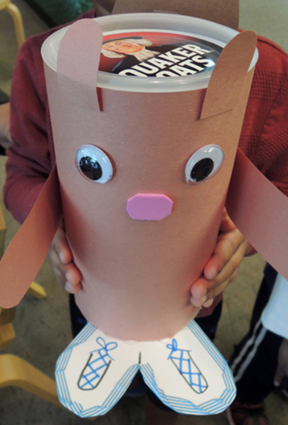 Next, the acorn! This is a packing tape core. Our cores were 3.5″ tall, which is slightly taller then your average core (we get them through our recycling program). But a regular core works too. Or a small box, really. The cap of the acorn is a paper bowl that has been cut down, flattened around the tape core edges, and hot glued in place. And don’t forget the pipe cleaner stem!
Next, the acorn! This is a packing tape core. Our cores were 3.5″ tall, which is slightly taller then your average core (we get them through our recycling program). But a regular core works too. Or a small box, really. The cap of the acorn is a paper bowl that has been cut down, flattened around the tape core edges, and hot glued in place. And don’t forget the pipe cleaner stem!
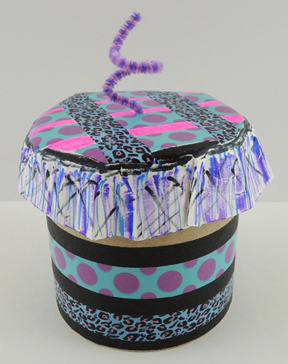 You might have noticed the acorn looks a little…unusual. That’s because kids were instructed to make the acorn as enticing as possible. Which means going crazy with , patterned tape, and markers!
You might have noticed the acorn looks a little…unusual. That’s because kids were instructed to make the acorn as enticing as possible. Which means going crazy with , patterned tape, and markers!
When everyone was finished, we headed outdoors to the library’s plaza to chase down some acorns. Katie was behind everyone with her camera to capture the race, I was in front snapping the blog photo, and the story time grown ups brought out their cameras to create what Katie calls “the ultimate story time paparazzi shot.”
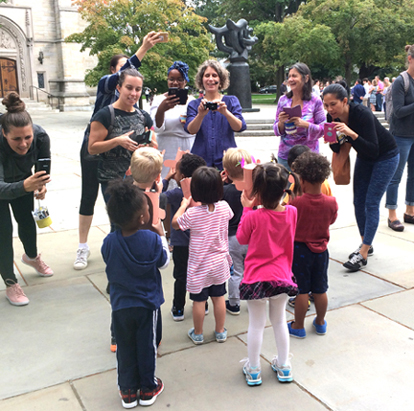 We asked the kids to line up. The grown ups, acorns in hand, got a little head start. Then on the shout of “Go!” the kids chased after their respective acorns!
We asked the kids to line up. The grown ups, acorns in hand, got a little head start. Then on the shout of “Go!” the kids chased after their respective acorns!
